

Tips To Get The Most Battery Life Out Of Your Samsung Galaxy
source link: https://www.slashgear.com/1131210/tips-to-get-the-most-battery-life-out-of-your-samsung-galaxy/
Go to the source link to view the article. You can view the picture content, updated content and better typesetting reading experience. If the link is broken, please click the button below to view the snapshot at that time.
Tips To Get The Most Battery Life Out Of Your Samsung Galaxy
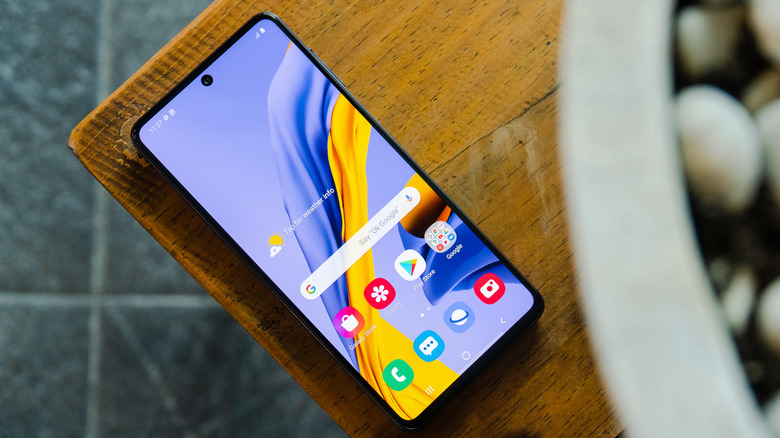
When it comes to Android smartphones, Samsung is among the market leaders. The South Korean tech giant manufactures smartphones for every budget and use case. Do you want an affordable smartphone with a vibrant display and decent cameras? The latest Galaxy A series has got you covered. Do you want to get one of the best Android smartphones on the market with all the new features? The Galaxy S22 series has got it all.
However, whether it is the Galaxy A53 5G or the Galaxy S22, battery life is one of the most critical aspects one considers before purchasing a phone. Although most Galaxy models offer a decent usage time, some users might face battery life issues. It is important to remember that effective battery life depends upon usage habits. Multiple factors may contribute to poor battery life on your Galaxy, including but not limited to high display brightness, always-on display, connectivity options such as Wi-Fi, Bluetooth, or GPS, and outdated software.
Fortunately, there are a few tips for getting the most battery life out of your Samsung Galaxy so you don't wind up scrambling for the charger around lunchtime every day.
Adjust brightness levels and screen timeout
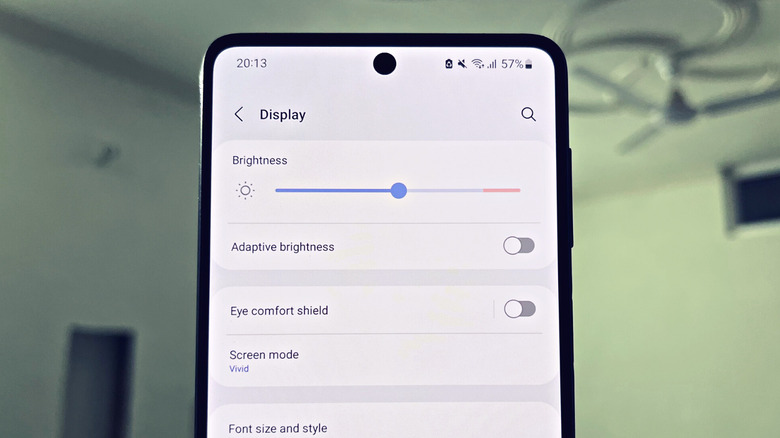
Most mid-range and high-end models in the Galaxy lineup come with AMOLED screens with high peak brightness. For instance, the mid-range Galaxy A53 has a peak brightness of 800 nits, while the Galaxy S22 Ultra can go up to 1,750 nits. Although the higher brightness makes viewing the content on the screen easier, it also consumes a lot of battery. Using your Galaxy at lower brightness levels can significantly increase battery life. To lower the display brightness of your Samsung Galaxy smartphone, follow the steps below:
- Swipe from the top of the display to open the notification section
- Drag the brightness slider towards the left to reduce brightness.
- When outdoors, drag the brightness slider towards the right to increase visibility.
But what if you don't want to keep adjusting your display's brightness all day? Well, your Galaxy can optimize the brightness based on ambient light. Head to the Settings section, select Display, and enable Adaptive Brightness (or Auto Brightness for some models).
Another feature that can help you minimize battery consumption is Screen Timeout. The feature turns off your Galaxy phone's display when not in use. The time could be 15 seconds, a minute, or even 10 minutes. However, to get the most battery life out of your Galaxy, set the Screen Timeout to under a minute (via Samsung).
- Open the Settings app.
- Select Display.
- Scroll down to tap on the Screen Timeout option.
- Select a time-out duration.
Disable always-on display or set a schedule
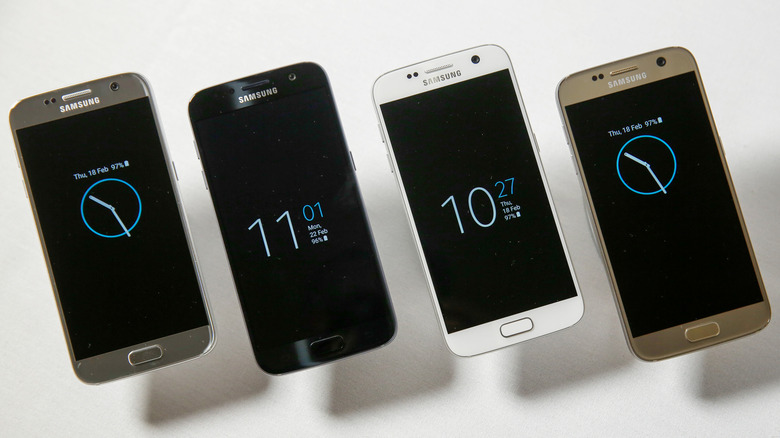
Samsung's always-on display feature has appeared on several Galaxy models. It allows supported phones to show essential information on the lock screen, such as time and notification icons, while the phone is otherwise on standby. However, this feature uses the display extensively, which draws power from the battery. Turning off the always-on display is a good idea to maximize your battery life.
- Open the Settings app.
- Scroll down and tap Lock Screen.
- Now, select Always On Display.
- Turn the feature off by tapping on the slider in the top right corner (via Samsung).
If you wish to keep the feature on, setting a schedule can save you some battery. This way, the always-on display will only be active during the hours you actively use your phone. For instance, you can schedule the always-on display for daytime hours when you're at work or in class and need the clock and notification icons to be readily visible on your display. Follow the steps given below to set a schedule for always-on display:
- Open the Settings app.
- Tap on Lock Screen.
- Select Always On Display and tap on Show as scheduled or Set schedule.
- Select the start and the end time.
For those who wear a Galaxy Watch, scheduling the always-on display to be off during the daytime is a good way to save power, since you can access time and notifications on the watch.
Turn on power saving mode and monitor connectivity options
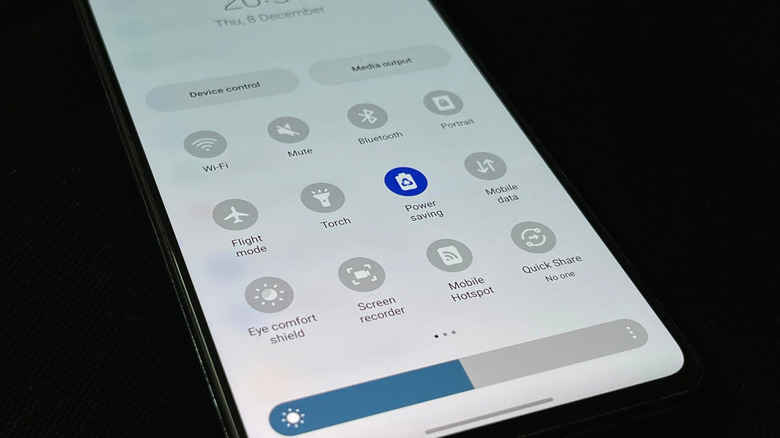
Samsung Galaxy phones come with a Power Saving mode that can help you extend the battery life by "limiting [...] CPU performance, reducing screen brightness, [and] turning off the touch key light and vibration feedback." Although the exact features vary depending on your model, it also closes background apps and reduces strain on your phone's battery (via Samsung).
- Open Settings on your Galaxy phone.
- Select Device maintenance or Battery and device care.
- Tap on Battery in the menu that appears on the screen.
- Locate and enable Power Saving mode.
- Alternatively, you might also have the Power Saving mode shortcut in your notification panel.
You can also access and tweak settings like adaptive battery, which limits battery usage for apps you don't use frequently, and Protect Battery, which limits the maximum charge capacity to 85% to extend the battery's overall lifespan. These settings are in More battery settings, located in the Battery menu.
While using your smartphone, you might use connectivity options like Wi-Fi, Bluetooth, or location. However, they consume a decent amount of battery, especially if you never turn them off. You can turn off Wi-Fi when you're not using it. If you listen to music or attend calls using a Bluetooth device, turning it off after you're done can save energy. Last but not least, disabling location services will help you get the most battery life out of your Samsung Galaxy.
Uninstall unused apps from your Samsung Galaxy and check for updates
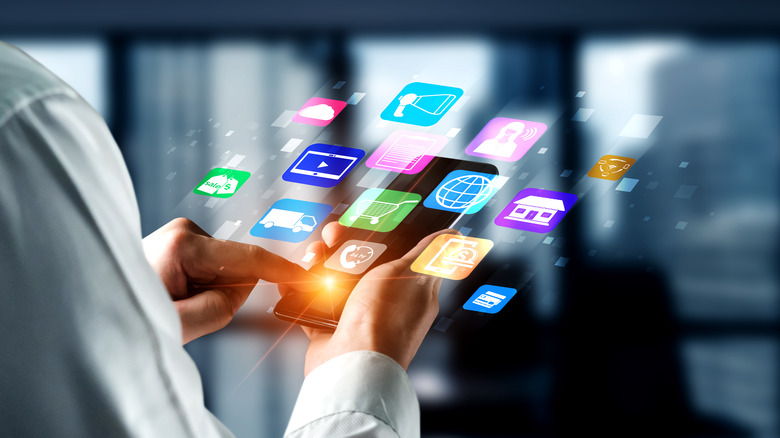
Our phones have apps that update their content in the background, using system resources such as RAM, storage, and battery. If your Galaxy phone is running out of battery too often, uninstalling unnecessary apps will help. Here is the fastest way to uninstall an app (via Samsung):
- Press and hold on to an app's icon on the home screen.
- Select Uninstall from the menu that appears.
- The app, along with the data associated with it, will be removed from your Galaxy phone.
Alternatively, you can limit battery usage for apps you don't use regularly. Samsung's One UI provides an option to put unused apps to sleep, which is also the feature's name. Follow the steps given below:
- Open the Settings app.
- Scroll down and tap Device maintenance or Battery and Device Care.
- Tap on Battery.
- Select Background usage limits in the menu.
- Enable the Put unused apps to sleep feature.
Samsung also advises users to check for software updates and upgrade to the latest version available. On some Galaxy phones, users will find the Software Update option in the About Phone section at the bottom of the Settings app. However, other models have a dedicated Software Update section that shows information like when the device was last updated and whether an update is available (via Samsung). If an update is available, installing it might improve the battery life.
Bonus tips for charging and display settings
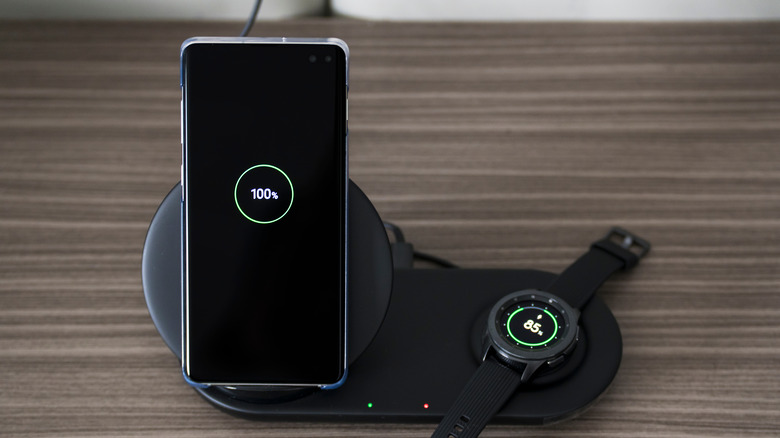
Samsung recommends charging Galaxy phones with compatible chargers only. Plugging your phone in a charger with a higher or lower charging rate could result in inconsistent charging speed and harm the phone's battery. Using the provided Samsung charger is the best option. The company also recommends that you not let the battery go below 20% to extend its life span. If you're planning to store your smartphone for a long time, ensure that it has at least 50% battery.
Another tip for Galaxy devices with an AMOLED display is to use a dark theme. To enable dark mode, follow the steps given below:
- Open the Settings menu.
- Go to Display.
- You'll see two options — Light and Dark, and a visual representation of the modes. Select Dark.
- This will enable dark mode on your Galaxy device.
- If you wish to schedule dark mode, tap Dark mode settings and enable Turn on as scheduled to set up a custom schedule.
The latest Galaxy smartphones, such as the Galaxy S22 and the Galaxy Z Fold series, have screens that support higher refresh rates, which require more battery. Hence, using them at low, or adaptive refresh rates will save battery (via Samsung).
- Open Settings.
- Search for Motion Smoothness.
- Select Standard for locking the display at 60Hz.
- Select Adaptive refresh rate for letting the system decide and enable a higher refresh rate when needed.
12 Things You Never Knew Your Smartphone Could Do
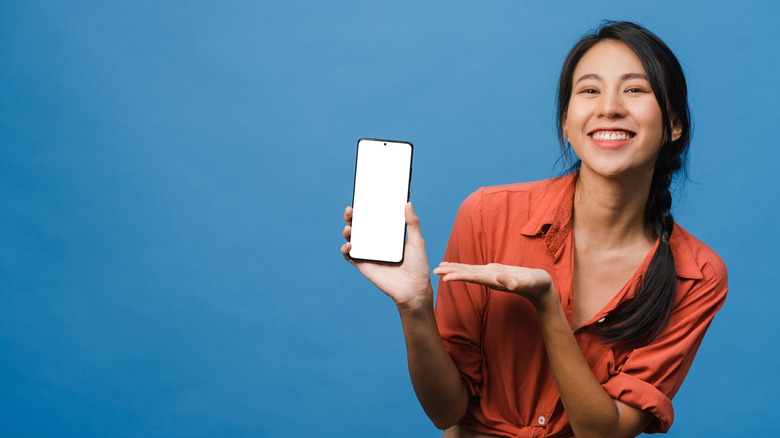
For many, it's a ritual to wake up, grab your phone, and open Instagram. You start scrolling an endless feed, only to realize a while after that you need to get on with your day. But your smartphone can do more than just calling, messaging, and scrolling through social media, much of which is quite productive.
Modern phones are capable of doing things like controlling the gadgets in your smart home, for example. But even if you don't have a smart home, you can do plenty of cool things with a smartphone.
Some of those cool things are built into your phone out of the box. Other things require installing an app from the App Store or the Play Store. Give the compulsive social media scrolling a break and use your smartphone for something more productive or innovative.
In this guide, we cover 12 things you didn't know you could do with your smartphone.
Create cool looping videos
You've probably edited videos on your phone before. There are tons of apps out there and you can also create cool stuff with Instagram's boomerang. But did you know you can create cool looping videos with the Clips app if you use an iPhone?
These aren't your basic run-of-the-mill looping videos. Here's how to make it happen:
Start by recording a simple loop video and import it into the Clips app. Next, trim the beginning and end of the video so it loops by itself. Then, add more clips with the same movement. Finally, change an unexpected element of your video (for instance, scale or change an object).
If you need some help with editing, Apple has a tutorial for editing videos on the Clips app. Once you've created your video, you can directly post it on social media, share it with a friend, or save it on your device.
Control your car
Ever had to drive a car parked for hours under the sun? The first few minutes are excruciatingly hot even with the AC turned on. Wouldn't it be awesome if you could cool down the car before you start driving?
You can do that, and a lot more, with Viper SmartStart. It essentially converts your smartphone into your vehicle's remote control. Installing the complete system allows you to unlock and start the car, open the trunk, find your car's location, and activate its security system, among other things. With Viper SmartStart installed, you'll have the option to prepare the car for a comfortable experience before you use it.
The app is available for both Android and iOS for free, but you'll need to invest in hardware and pay Viper's monthly service fee to use the system. The total cost of installing the system will also vary from installer to installer since it's not a DIY system.
Use your phone as a tape measure
Need to measure the length of an object, but don't have your tape measure handy? There's little to worry about when you have a smartphone. There are several mobile apps that can help you measure the length of an object by using the phone's camera.
For instance, you can use the Measure app on the iPhone to measure an object's length. The app uses augmented reality (AR) to calculate the object's dimensions. To use the Measure app:
Start by launching the app. Point your phone's camera towards an object. Keep adjusting the camera's angle until you see a white circle with a dot at its center. Then, bBring the dot over the starting point of the object. This is where it will start measuring from.
Next, press the Add (+) button. Move the phone across the object until the dot is on the other end of the object. Press the Add (+) button again when the circle is over the point where you want to end the measurement.
Display the directions on the windshield
Have you ever driven when it's foggy or raining heavily? It's hard to see what's on the road. You want to drive as slowly and carefully as you can to avoid missing a turn and driving your car off the road. The good thing is that your smartphone can help.
You can use the Hudway app to display the directions on your windshield. Download the app on your Android or iOS device, enter the destination and let Hudway pull the correct directions. Place the phone on your car's dashboard so it can project the map onto the windshield.
Note that you should mount the phone properly so it doesn't fall off the dashboard. Also, place it appropriately so it doesn't keep you from seeing the road clearly. The app uses your phone's GPS, which means it will consume more battery, so be sure to keep your charger handy in case you need it.
Use your phone as a metal detector
No, you can't use your phone for treasure hunting. However, if you've lost a piece of jewelry or want to find a needle that rolled off your hand, you can use your smartphone as a metal detector.
You'll find a ton of metal detector apps on the Google Play Store and App Store. The apps are free, though not ad-free. Download one of those to your Android or iOS device and start your metal search by moving your phone around.
The app will use a built-in magnetometer to find metallic objects as you move your device, and notify you when it finds a metal object.
Note that there might also be other metallic objects in the area and electronic items like TV and refrigerator. These objects may get in the way when you're using a metal detecting app. The results are usually not completely reliable and depend on your phone's magnetic sensor, but they're helpful nonetheless.
Measure blood alcohol content
Wonder if you're ok to drive? Well, your smartphone can help you verify this before you get behind the wheels and save you from a DUI and potential accidents. You can use your smartphone as a breathalyzer by installing an app like BACtrack on your Android and iOS device.
Of course, you also need an actual breathalyzer from BACtrack that connects with your phone and syncs with the app. Once those are connected, you'll be able to blow into the device and check the app to look at your current blood alcohol content. With BACtrack, you'll always know if it's best to use a cab or you're good to drive without putting yourself and anybody else's lives at risk.
Note that you should wait at least 15 minutes after your first drink to check your blood alcohol content and it might continue to rise until one hour after your last drink (per WebMD).
Use your smartphone as a remote
Lost your remote again? Guess what? You don't need to find it if you have a smartphone. You can install an app, or use a built-in function if your phone has it, to control electronic devices like TV, AC, DVD player, and projector, among others.
Newer iPhones and Android TVs typically have built-in controls for Apple TV and Google TV, respectively. However, you can download an app like ASmart Remote IR (Android) or EzRemote Lite (iOS) and use your phone as a remote control for almost any household device. You can also use the manufacturer's app in some cases.
These apps usually rely on your phone's IR blaster, but there are other ways to use your smartphone as a remote if your phone doesn't have an IR blaster. For instance, you can use the Google TV app to control an Android TV. The app syncs with the Android TV and uses WiFi, so it works even without an IR blaster.
Digitize old negatives
Found some old film negatives while cleaning the house? How about digitizing them real quick using your smartphone? Since most photos exist only as a digital copy now, it makes sense to scan these negatives and store them as digital files instead of converting them into a physical photo album.
You don't need a film and slide scanner to scan negatives. You can scan negatives with your smartphone by clicking a picture of the negative and scanning it with one of the negative scanner apps available on the Play Store or App Store.
You can use apps like Photo Negative Scanner (Android) and FilmBox (iOS) to quickly capture negatives and turn them into high-quality pictures. The apps use a scanning algorithm to automatically invert colors and improve image quality to produce excellent quality pictures. Once you've digitized these pictures, you can export them to your device and share it with friends and family. You can also convert them into an album using an app like Google Photos.
Stop sharing data with apps you no longer use
If you're like most people, you have a few unused apps installed on your phone. Even though you're not using them, they can still access data on your phone. For instance, if you installed a dating app last year, but have since found someone, it makes sense to revoke the app's access to your data.
There's an easy way to stop these apps from collecting your data on Android. Android's permission auto-reset option periodically cleans up permissions from unused apps. You'll receive a notification each time the permissions are reset. If you wish to continue allowing access to data to a certain app, you can always go back and change the permissions.
You can also review app permissions in iOS by going into Settings > Privacy. You can select individual apps and grant or revoke access to data based on your preference. There's no auto-reset option for permissions granted to unused apps on iOS, though, so you'll need to make these changes manually.
Split screen
Splitting your screen is an excellent way to multitask. It's always been easy to split screens on your laptop, but did you know you could split your smartphone's screen too? Both Android and iOS devices let you split screens. The option is built-in on Android so you don't need to install any third-party apps, but you'll need a third-party app on iPhone.
Here's how you can split the screen on stock Android or Samsung devices:
Launch both apps you want to use after splitting the screen. Then, tap the recent apps button from the bottom of your screen. Find the app you want to use in split screen and hold-press the app's icon at the top. Next, select "Split Screen". Finally, select the other app you'd like to use after splitting the screen.
iPads do have a built-in split screen option, but on iPhone you can use an app like Split Screen View to multitask.
Use smart lock
Android Smart Lock solves one of the most annoying parts of smartphone security — having to unlock the phone every time you want to use it. Instead, Smart Lock offers conditional security. It doesn't lock the phone at specific times as per your preference, and locks it otherwise.
For instance, you can set the Smart Lock such that the phone will remain unlocked as long as it's in a certain place (such as your home). Similarly, you can also keep the phone unlocked when it's on your body or connected to a trusted device.
You can enable Smart Lock on Android 5.0 Lollipop and later by going to Settings > Security > Advanced > Trust agents. Your phone may house Smart Lock in a different place, but you should be able to find it by searching for "Smart Lock" in Settings.
Once you've set up Smart Lock, you don't need to worry about repeatedly inserting the security pin or pattern every time you want to unlock your phone.
Use notification history
How many times have you read a message from a friend from the notification panel and decided to leave the notification untouched as a reminder for replying to them? If you do this too, you're probably careful about not clearing the notifications panel because it means your reminders are gone. It's even worse if you forget to respond to your boss because you cleared your notifications.
However, there's an easy solution. You can enable notifications history on your Android smartphone. Doing this will create a log of notifications that you'll be able to access even if you inadvertently clear all the notifications.
Enabling notification history is fairly straightforward. Here's how you can do it on Android 12:
Go to Settings > Notifications > Notification history. Then, toggle the button on for the "Use notification history" option.
Once you've done this, you'll see a log of subsequent notifications in a section under the "Use notification history" option.
Recommend
About Joyk
Aggregate valuable and interesting links.
Joyk means Joy of geeK